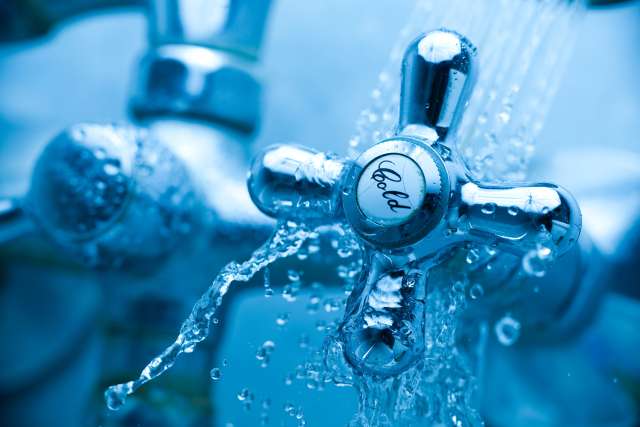Running out of hot water during your shower might actually be a good thing. A cold shower — even just for a few minutes — can work as cold therapy to help you heal, recover and generally feel good, especially after exercise.
“Cold showers are a convenient way for a weekend warrior, amateur athlete or anyone who enjoys exercise to get some of the benefits of cold therapy after a workout,” says Sharon Hame, MD, a UCLA Health orthopedic surgeon with a subspecialty certification in sports medicine.
What is cold therapy?
Cold therapy, also called cryotherapy, uses exposure to cold temperatures to cool the body’s tissues for therapeutic reasons. There are several ways to apply cold therapy, including:
- Cold showers, which involve lowering the water temperature below 60 degrees for two to three minutes at a time
- Cold spray, used to numb a small area
- Cold water immersion or ice baths, or submerging everything but your head and neck in cold water
- Localized ice application to treat injuries or specific muscle groups
- Whole-body cryotherapy, which exposes the body to very cold vapors
Why cold showers could be good for you
Cold showers are not the primary treatment for any conditions, and conclusive research about cold therapy is still limited. But a quick blast of cold water can be beneficial when used for symptom relief.
Taking cold showers may:
1. Bolster your immunity to common colds
Going from a hot to cold shower — even for a couple of minutes — might protect you from circulating viruses. The shock of cold water can stimulate the blood cells that fight off infection (leukocytes). One study in the Netherlands found that people who switched to cold showers for 30, 60, or 90 seconds for 90 days called out sick from work 29% less than people who didn’t switch to cold showers.
2. Combat symptoms of depression
Limited research is available about the effects of cold water therapy on depression. But the research that exists shows some positive results. In one clinical study, participants who took daily cold showers for several months reported decreased depression symptoms. Additional research suggests that cold water may boost your mood and decrease anxiety.
3. Improve circulation
Cold water strains your body — it goes into “survival mode,” working hard to maintain its core temperature. This stimulates your body to increase blood flow circulation.
“Increasing circulation redistributes blood and delivers freshly oxygenated blood to areas of the body that need to recover,” Dr. Hame says. “It decreases the time it takes your muscles to recover after exercise.” Over time, your circulatory system may become more efficient and move blood through the body more quickly — helpful for anyone with high blood pressure or diabetes.
4. Increase metabolism
Your body expends energy trying to stay warm in a cold shower. The result may be a small amount of calorie burn and increased metabolism. But don’t plan to throw your healthy eating and exercise plan out just yet — research on this benefit is limited.
5. Reduce inflammation and prevent muscle soreness
Cold temps make your blood vessels tighten up (vasoconstrict). When that happens, blood moves to your body’s core and vital organs. The blood naturally becomes oxygen- and nutrient-rich during the process.
As your body heats up again, the blood vessels expand (vasodilate), bringing that oxygenated blood back to your tissues. As it flows back, it helps to flush out inflammation — a cause of delayed-onset muscle soreness, which can occur a couple of days after exercise.
6. Relieve localized pain
Cold therapy alleviates pain by reducing inflammation. But it also interferes with your brain’s perception of the pain. “If you’ve ever been given cold spray before an injection,” Dr. Hame says, “it works by decreasing how quickly the pain sensation travels through your nerves.” It dulls the nerve transmission sent to your brain.
How to use your shower as cold therapy
There’s no evidence suggesting how often someone should take a cold shower. But Dr. Hame recommends using cold therapy in response to your athletic endeavors — if you work out daily, it’s OK to take a cold shower every day. Her tips for taking cold showers include:
- Keep the water below 60 degrees: In a typical home shower, make the shower as cold as it can go.
- Take it slow: Start with 30 seconds of cold water. Work up to a minute and progress until you take a cold shower for two to three minutes.
- Alternate hot and cold: UCLA Health athletic trainers often recommend a contrast shower post-workout. It involves a hot shower for three minutes, followed by a cold shower for one minute. Repeat the pattern three times and always end with the cold.
Health considerations before taking cold showers
Dr. Hame explains that cold showers are safe and pose no health threat for most healthy people. But consult your primary care physician (PCP) if you have concerns or have been diagnosed with:
- Cold urticaria (hives), a skin reaction to cold exposure
- Heart disease, since a shock of cold may put added stress on the heart
- Raynaud’s syndrome, which causes numbness in your fingers and toes in response to cold temperatures




